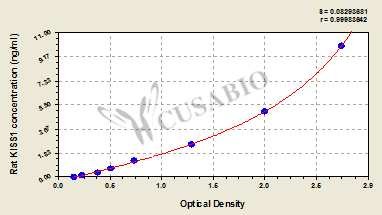Please provide the following information regarding Rat Kisspeptin 1, KISS1 ELISA KitCSB-E13434r
a. What sample types have been tested with this kit.
b. What observed concentrations were obtained from these sample types and what dilutions were used?
c. Please provide the QC data for sample tested with this kit.
d. What is the standard? (Recombinant full-length protein? Partial protein (range?)?, peptide (sequence range?), native protein?)
e. If recombinant protein, then what is the host?
f. Is the capture antibody a monoclonal or polyclonal?
g. What is the host of the capture antibody?
h. Is the detection antibody a monoclonal or polyclonal?
i. What is the host of the detection antibody?




